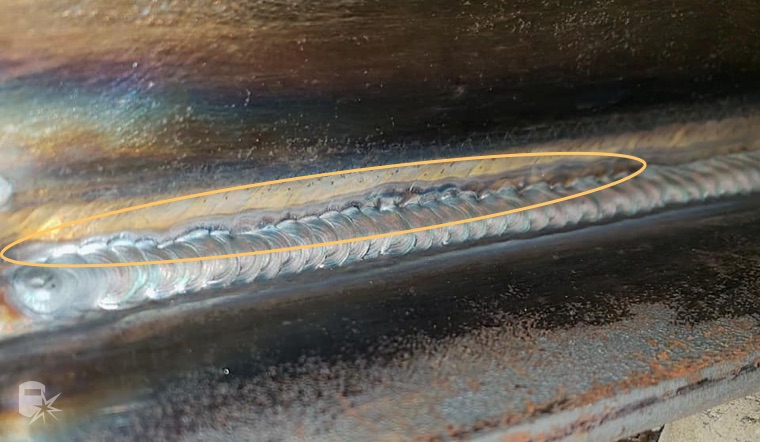Preventing Weld Undercut: Proven Techniques Every Welder Need To Know
Preventing Weld Undercut: Proven Techniques Every Welder Need To Know
Blog Article
Comprehending the Causes and Solutions for Undercut Welding in Steel Manufacture Procedures
In the world of steel fabrication processes, the occurrence of undercut welding presents a substantial obstacle that demands an extensive understanding of its reasons and feasible remedies. The intricate interplay of various elements during welding operations can cause this unfavorable sensation, influencing the architectural honesty and overall high quality of the welded joints - Preventing weld undercut. By studying the source of undercut welding and checking out reliable restorative steps, fabricators can elevate the requirement of their handiwork and ensure the production of flawless metal elements
Typical Reasons For Undercut Welding
Frequently ignored in steel fabrication, undercut welding takes place due to various elements that demand careful focus and competence to be efficiently alleviated. In addition, incorrect welding methods, such as making use of the wrong welding angle or travel speed, can likewise add to damage development. The choice of welding parameters, such as voltage, present, and cable feed rate, plays a substantial role in the occurrence of undercut welding.
Effect of Incorrect Welding Parameters
Unreliable welding criteria can significantly compromise the stability and high quality of bonded joints in metal manufacture procedures. The influence of incorrect welding parameters manifests in various ways, leading to structural weaknesses and defects in the bonded parts. One critical aspect affected by improper welding specifications is the infiltration depth of the weld. Insufficient heat input due to reduced welding currents or exceedingly high traveling speeds can result in inadequate blend in between the base metals, causing incomplete joint penetration and weakened bonds. Alternatively, too much warm input brought on by high welding currents or slow traveling rates can cause extreme and burn-through reinforcement, creating a weak and unsteady weld structure. Additionally, inaccurate specifications such as improper voltage setups or inaccurate electrode angles can add to unpredictable weld bead accounts, lack of blend, and boosted chances of issues like undercutting. For that reason, thorough interest to welding criteria is vital to ensure the manufacturing of top notch welds with the desired mechanical residential or commercial properties and architectural integrity.
Result of Improper Lantern Angle
Improper lantern angle in welding procedures can dramatically impact the quality and integrity of the last weld joints in steel manufacture procedures. The lantern angle plays a crucial role in identifying the heat input and distribution during welding. When the lantern angle is wrong, concerns such as damaging can occur. Undercutting is a common welding defect where a groove forms along the weld toe, weakening the joint and compromising its architectural honesty.
A lantern angle that is as well steep can cause insufficient infiltration, incomplete blend, and boosted spatter. On the other hand, a torch angle that is also superficial can result in too much infiltration, burn-through, and distortion of the base material. Preventing weld undercut. Correct lantern angle is vital for ensuring regular weld high quality, strength, and look
To stop undercutting and various other problems brought on his comment is here by incorrect torch angles, welders have to be trained to keep the right torch angle throughout the welding procedure. Regular tracking and adjustment of lantern angles during welding can aid achieve audio welds with minimal issues.
Role of Inadequate Welding Strategies

One more element of inadequate welding techniques is improper weld prep work. Poor cleansing of the base metals, wrong joint design, or insufficient edge prep work can all add to undercut welding. Poor securing gas protection or using the incorrect kind of gas can result in incomplete fusion and the development of undercut flaws.
To deal with the role of poor welding methods in metal manufacture processes, it is vital to give detailed training for welders. Proper education and learning on welding specifications, joint preparation, and securing gas choice can aid stop undercut welding and make certain top quality welds in steel construction projects.
Efficient Solutions for Undercut Welding
Dealing with undercut welding in steel fabrication calls for executing reliable services to boost weld high quality and architectural integrity. Among the primary options to combat undercut is to change welding parameters such as voltage, present, and take a trip speed to make sure proper warm input and blend. address By fine-tuning these settings, welders can avoid too much melting of the base metal and filler material, lowering the possibility of undercut development.
In addition, proper joint preparation is critical in avoiding undercut. Making sure tidy base metal surfaces complimentary of contaminants and using the proper bevel angle can aid promote better weld penetration and minimize the threat of undercut - Preventing weld undercut. Employing suitable welding methods, such as oscillating the lantern or weaving, can also aid in distributing warm uniformly and loading the weld joint properly, reducing the opportunity of undercut flaws
In addition, selecting the correct welding consumables, including electrodes and filler metals, is vital in alleviating undercut. Making use of products with ideal chemical make-ups and mechanical homes can add to accomplishing sound welds with very little undercut. Routine evaluation and quality assurance procedures ought to likewise be executed to discover and deal with undercut problems quickly, guaranteeing the general integrity of fabricated steel parts.

Final Thought
In final thought, comprehending the causes and solutions for undercut welding in steel manufacture procedures is important for accomplishing top quality welds. By dealing with common reasons such as inaccurate welding parameters, improper lantern angle, and insufficient welding techniques, welders can prevent damaging and guarantee strong, durable welds. It is crucial to take note of these elements and implement reliable services to improve the total welding process and last product quality.

Report this page